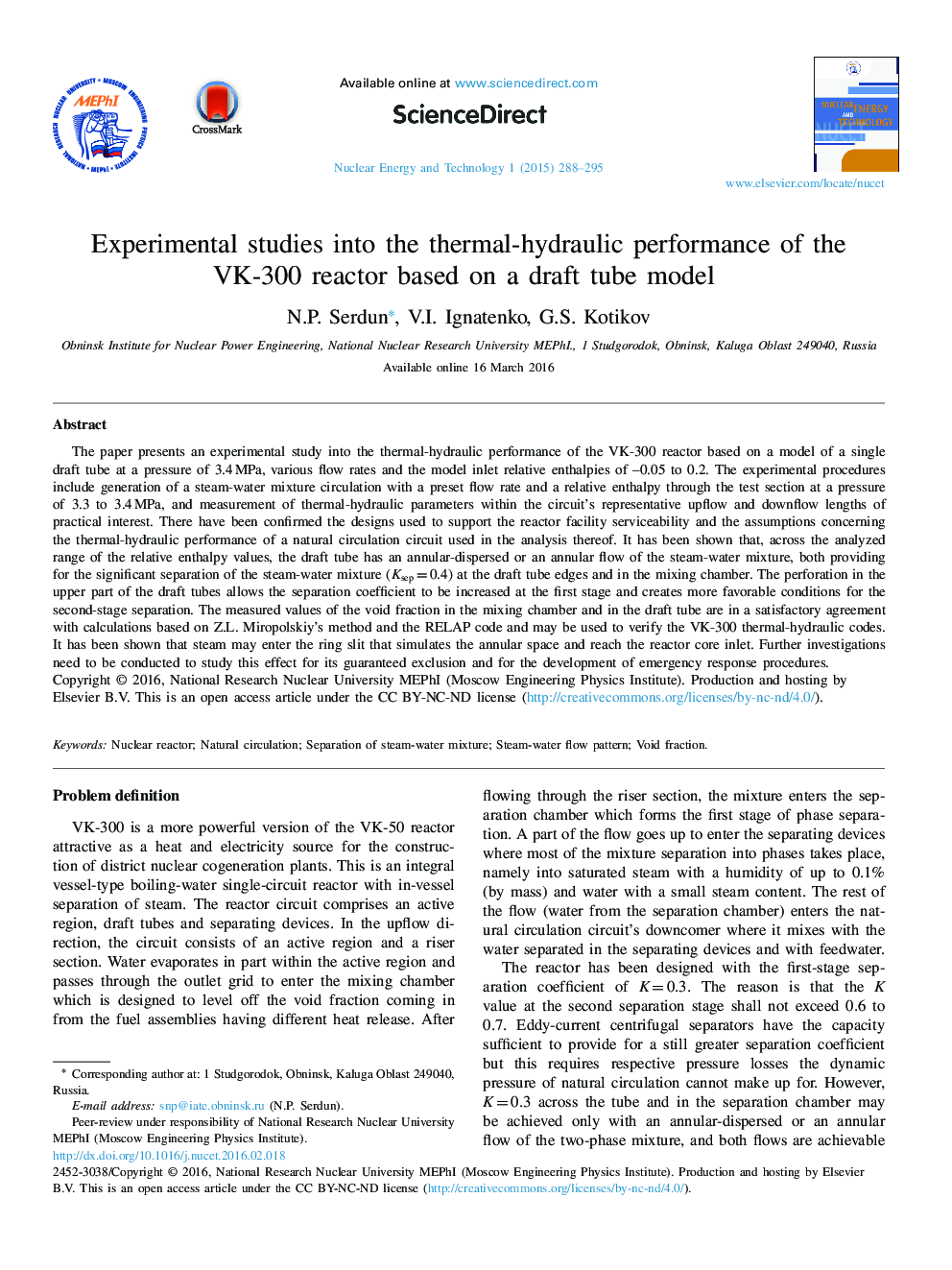| Article ID | Journal | Published Year | Pages | File Type |
|---|---|---|---|---|
| 366588 | Nuclear Energy and Technology | 2015 | 8 Pages |
The paper presents an experimental study into the thermal-hydraulic performance of the VK-300 reactor based on a model of a single draft tube at a pressure of 3.4 MPa, various flow rates and the model inlet relative enthalpies of –0.05 to 0.2. The experimental procedures include generation of a steam-water mixture circulation with a preset flow rate and a relative enthalpy through the test section at a pressure of 3.3 to 3.4 MPa, and measurement of thermal-hydraulic parameters within the circuit's representative upflow and downflow lengths of practical interest. There have been confirmed the designs used to support the reactor facility serviceability and the assumptions concerning the thermal-hydraulic performance of a natural circulation circuit used in the analysis thereof. It has been shown that, across the analyzed range of the relative enthalpy values, the draft tube has an annular-dispersed or an annular flow of the steam-water mixture, both providing for the significant separation of the steam-water mixture (Ksep = 0.4) at the draft tube edges and in the mixing chamber. The perforation in the upper part of the draft tubes allows the separation coefficient to be increased at the first stage and creates more favorable conditions for the second-stage separation. The measured values of the void fraction in the mixing chamber and in the draft tube are in a satisfactory agreement with calculations based on Z.L. Miropolskiy's method and the RELAP code and may be used to verify the VK-300 thermal-hydraulic codes. It has been shown that steam may enter the ring slit that simulates the annular space and reach the reactor core inlet. Further investigations need to be conducted to study this effect for its guaranteed exclusion and for the development of emergency response procedures.
